The WHO and FDA disagree on whether ageing is a natural process or a condition that should be medically treated. While the WHO avoids labeling ageing as a disease, focusing instead on "ageing-associated decline", the FDA sees it as a natural process, complicating drug approvals for anti-ageing therapies. This debate impacts healthcare, research funding, and treatment development.
Quick Comparison:
| Aspect | WHO Position | FDA Position |
|---|---|---|
| Classification | Ageing is not a disease | Ageing is a natural process |
| Focus | Functional decline | Disease-specific treatments |
| Research Impact | Supports ageing mechanism studies | Limits to condition-specific work |
| Challenges | Risk of ageism in healthcare | Difficult drug approvals |
The debate shapes how we approach ageing-related healthcare and research. Could aligning these views lead to better outcomes for an ageing population? Read on for more insights.
1. WHO Position on Ageing Classification
In January 2022, ICD-11 clarified that ageing is not classified as a disease.
Initially, the WHO suggested replacing "senility" with "old age" in diagnostic categories. However, this proposal faced strong opposition from the medical community and was ultimately withdrawn [1].
Instead, the WHO adopted the term "ageing-associated decline in intrinsic capacity." This phrasing highlights the functional effects of ageing without labeling it as a disease - an approach supported by experts like Luigi Ferrucci [1].
Here are the key concerns that shaped the WHO's decision:
| Concern | Explanation |
|---|---|
| Medical Practice | Doctors might dismiss symptoms as just part of ageing rather than investigating further. |
| Healthcare Quality | Risk of poor care and missed diagnoses if ageing is seen as the root cause of issues. |
| Social Impact | Concerns about reinforcing ageism in healthcare settings. |
"The crux of the matter is that if you legitimize old age as a diagnosis, you run the risk of a lot of people using it inappropriately", says Professor Kiran Rabheru, a geriatric psychiatrist at the Ottawa Hospital [1].
This classification has far-reaching implications for policies, research funding, and treatment standards. The debate remains active, with experts offering differing viewpoints. For example, Daniel Belsky, assistant professor at Columbia Mailman School of Public Health, agrees with the WHO's perspective:
"Ageing is a cause of disease, not a disease itself" [1].
On the other hand, David Sinclair from Harvard Medical School challenges this view:
"The current view that ageing is acceptable is ageism in itself" [1].
Ming Guo, director of UCLA's Ageing Center, provides a more balanced perspective:
"It acknowledges ageing and offers the opportunity to think there are things we can improve. It implies we can change our fate to a certain extent" [1].
This nuanced stance from the WHO lays the groundwork for contrasting perspectives, which will be explored further in the FDA's position in the next section.
sbb-itb-55c436e
2. FDA Position on Ageing Classification
The FDA views ageing as a natural process, not a disease, which contrasts with the stance of the WHO [2]. This perspective creates unique challenges for developing treatments related to ageing.
Here are three main hurdles in the FDA's regulatory framework for ageing-related therapies:
| Challenge | Impact | Current Status |
|---|---|---|
| Approval Process | Drugs must target specific age-related diseases, not ageing itself. | Requires alternative therapeutic approaches. |
| Measurement Criteria | No established metrics exist to measure ageing. | Development of validated biomarkers is pending. |
| Clinical Evidence | Proof is needed that targeting ageing biomarkers has positive outcomes. | Limited supporting data currently available. |
The Targeting Ageing with Metformin (TAME) study, approved in 2015, offers a creative way to work within these constraints. Instead of directly addressing ageing, the study examines whether metformin can delay chronic, age-related diseases. This approach reflects how researchers are adapting to meet FDA requirements while advancing ageing-related treatments.
"The Food and Drug Administration (FDA) considers ageing to be a natural process. This makes it difficult to get FDA approval for drugs that seek to slow or reverse the biological process of ageing. Instead, drugs intended to target ageing must target a disease that often results from the ageing process in order to demonstrate efficacy and gain approval." [2]
Industry stakeholders and Congress are increasingly pressuring the FDA to clarify its regulatory pathways for regenerative therapies. However, the current indication-specific approval process still poses challenges for comprehensive anti-ageing solutions.
Benefits and Drawbacks of Each Position
The differing views of the WHO and FDA on whether ageing should be classified as a disease highlight both opportunities and challenges for healthcare. Examining their positions reveals key impacts on medical research, treatment development, and patient care.
| Aspect | WHO Position | FDA Position |
|---|---|---|
| Research Funding | May boost funding for ageing research and related medical procedures | Focuses funding on specific diseases |
| Treatment Development | Supports targeting ageing mechanisms directly | Limits focus to specific age-related conditions |
| Resource Allocation | Allows use of metrics like QALYs and HYE for evaluation [3] | Relies on traditional disease-based allocation methods |
| Clinical Trials | Expands scope for studies on ageing interventions | Restricts trials to condition-specific indications |
| Healthcare Costs | Could cut the 32% of Medicare spending tied to end-of-life care | Maintains current spending patterns |
These differences reveal the tradeoffs involved in each approach. The WHO's stance on ageing as a disease could speed up the development of treatments aimed at improving the health of older adults. Dr. Sven Bulterijs emphasizes this potential:
"Even minimal attenuation of the ageing process by accelerating research on ageing, and development of geroprotective drugs and regenerative medicines, can greatly improve the health and well-being of older individuals".
However, this perspective also raises concerns about turning a natural process into a medical condition. The FDA's approach, while more traditional, upholds strict validation standards and shows flexibility through initiatives like TAME . This ensures treatments focus on specific conditions and avoids broader ethical concerns tied to labeling ageing as pathological.
The debate between these positions continues to shape research priorities, treatment strategies, and how healthcare resources are allocated. As our understanding of ageing deepens, both frameworks may adapt to better address the needs of an ageing population.
Conclusion
Ageing's classification marks a key moment in healthcare policy, shaping the direction of longevity research and treatment development. By 2050, the global population of people over 60 is expected to nearly double, highlighting the pressing need to tackle ageing-related healthcare challenges.
The ICD-11's 'Ageing-related' extension code (XT9T) showcases a refined regulatory stance on age-related health concerns. This code underscores the complexity of blending natural ageing processes with medical interventions [4]. These regulatory decisions affect how resources are allocated and stress the importance of a unified strategy.
The numbers paint a clear picture: the U.S. alone is projected to require over 33,000 geriatricians by 2025, presenting a major workforce challenge.
"It acknowledges ageing and offers the opportunity to think there are things we can improve. It implies we can change our fate to a certain extent" says Dr. Ming Guo, director of UCLA's Aging Center, pointing to the potential for progress within existing systems. The FDA's approval of the TAME study is a prime example of how ageing-related research can advance under current regulations.
Combining traditional disease-focused methods with broader strategies aimed at ageing mechanisms could better allocate healthcare resources and deepen our understanding of age-related conditions. Aligning WHO and FDA regulatory approaches will play a key role as these organizations influence the future of longevity research and healthcare planning.
FAQs
What is the FDA’s position on ageing?
The FDA considers ageing to be a natural biological process. They believe that drugs should target specific diseases that arise due to ageing rather than attempting to treat ageing itself. This regulatory stance limits the approval of treatments aimed at slowing or reversing the ageing process directly.
Why does the WHO not classify ageing as a disease?
The WHO views ageing as a natural process rather than a disease. They focus on the functional decline associated with ageing, emphasizing the importance of addressing age-related health issues without medicalizing the natural process of getting older. This helps prevent ageism in healthcare and ensures that age-related symptoms are not dismissed as simply "part of ageing."
How does the disagreement between the WHO and FDA affect healthcare and research?
The WHO’s stance may encourage more funding and research into the mechanisms of ageing and treatments that target age-related decline. The FDA’s approach, on the other hand, focuses on treating diseases linked to ageing, which may slow the development of broader anti-ageing therapies but ensures strict regulatory standards for treatment approval.
What is the impact of the ICD-11's 'Ageing-related' extension code?
The ICD-11’s 'Ageing-related' extension code (XT9T) provides a refined regulatory approach to age-related health concerns. It underscores the complexity of balancing natural ageing processes with medical interventions and aims to bridge the gap between the WHO’s and FDA’s positions, facilitating more effective healthcare planning for ageing populations.









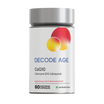

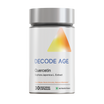

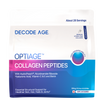

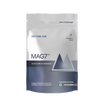

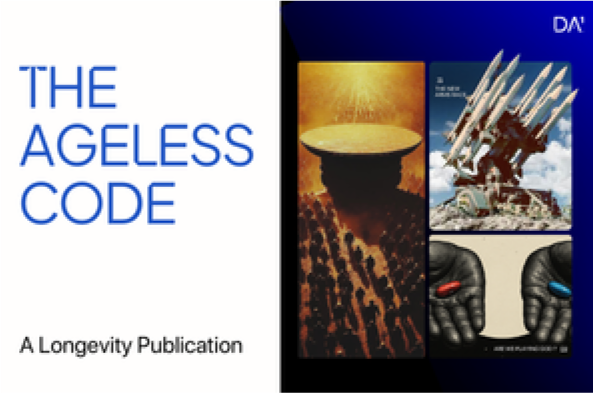








Leave a comment
All comments are moderated before being published.
This site is protected by hCaptcha and the hCaptcha Privacy Policy and Terms of Service apply.